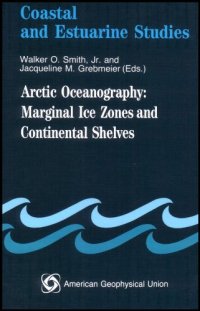
Ebook: Arctic Oceanography: Marginal Ice Zones and Continental Shelves
- Series: Coastal and Estuarine Studies
- Year: 1995
- Publisher: American Geophysical Union
- Edition: 1
- Language: English
- pdf
About The Product
Published by the American Geophysical Union as part of the Coastal and Estuarine Studies Series.
The Arctic Ocean is the least understood ocean on Earth, and yet its importance to the world's oceans and climate is immense. For example, it has been suggested that the Arctic is the region most likely to be affected by increased atmospheric temperatures which might occur as a result of anthropogenic releases of greenhouse gases. It also plays a critical role in global oceanic circulation, in that it modulates the formation of deep water in the North Atlantic via ice export. Despite its pivotal role in global processes, the Arctic remains poorly understood. This volume is an attempt to highlight and synthesize some of the recent advances in our knowledge of Arctic oceanography and includes topics that will interest physical, biological, chemical, and geological oceanographers as well as atmospheric scientists.
That the Arctic is so poorly known relative to other oceans is not surprising. It is largely ice-covered throughout the year, with only some of its continental shelves becoming ice?]free in summer. Its ice is mostly multi?]year and very thick, making penetration into the deeper portions impossible except by the most powerful ice?]breakers. However, in recent years new technologies have been applied to the Arctic, and our understanding of the physical, chemical, biological and geological processes which occur within it is rapidly increasing. Satellite sensors observe the Arctic continually, allowing us to follow ice circulation, storms, and openings in the pack ice that had never been observed previously. Moorings, ships and buoys now can withstand many of the rigors of the Arctic, and observations of the water column and seabed are becoming more common. Finally, because of its importance to global processes, studies of the Arctic are attracting scientists not only from Arctic nations but from nations around the world. Arctic oceanography truly has become an international effort.
Content:Chapter 1 Satellite Remote Sensing of the Arctic Ocean and Adjacent Seas (pages 1–50): Josefino C. Comiso
Chapter 2 Atmosphere?Ocean Interactions in the Marginal Ice Zones of the Nordic Seas (pages 51–95): Peter S. Guest, Kenneth L. Davidson, James E. Overland and Paul A. Frederickson
Chapter 3 Small?Scale Physical Processes in the Arctic Ocean (pages 97–129): Laurie Padman
Chapter 4 New Insights on Large?Scale Oceanography in Fram Strait: The West Spitsbergen Current (pages 131–182): Jean?Claude Gascard, Claude Richez and Catherine Rouault
Chapter 5 Chemical Oceanography of the Arctic and its Shelf Seas (pages 183–202): Leif G Anderson
Chapter 6 DOC Storage in Arctic Seas: The Role of Continental Shelves (pages 203–230): John J. Walsh
Chapter 7 Biological Processes on Arctic Continental Shelves: Ice?Ocean?Biotic Interactions (pages 231–261): Jacqueline M. Grebmeier, Walker O. Smith and Robert J. Conover
Chapter 8 Resolved: The Arctic Controls Global Climate Change (pages 263–283): Richard B. Alley